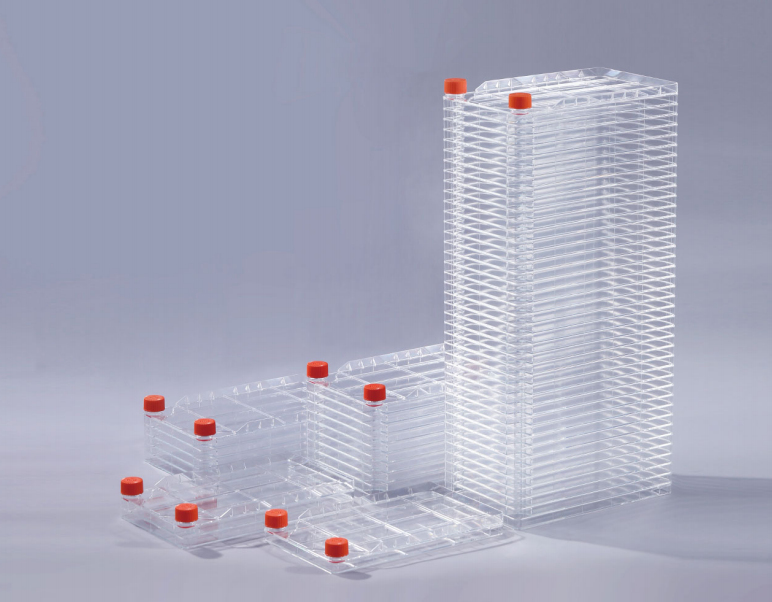细胞起源和遗传、表观遗传和微环境因素导致小儿颅内室管膜瘤的肿瘤内异质性
Cell-of-Origin and Genetic, Epigenetic, and Microenvironmental Factors Contribute to the Intra-Tumoral Heterogeneity of Pediatric Intracranial Ependymoma
Intra-cranial ependymoma (EPN) accounts for approximately 10% of pediatric brain tumors. The current therapeutic strategies have not significantly improved prognosis, which is still dismal in nearly 40% of patients. Major challenges for treatment are chemorefractoriness of EPN, tendency to recur, and high intra-tumoral heterogeneity (ITH). It is increasingly emerging that stalled neurodevelopmental programs driven by cancer stem cells (CSCs)/progenitor cells are at the root of oncogenesis and ITH of pediatric brain tumors, including EPN. This is the first review that examines how genetic and heritable epigenetic alterations and environmental selection forces drive ITH of pediatric intra-cranial EPN in the perspective of the CSC model. This review also summarizes how improvement in the single-cell technology has deepened the comprehension of the complexity, cell-of-origin, and developmental trajectories of EPN, paving the way for novel therapeutic options.
颅内室管膜瘤 (EPN) 约占小儿脑肿瘤的 10%。目前的治疗策略并没有显着改善预后,近 40% 的患者预后仍然不佳。治疗的主要挑战是 EPN 的化学难治性、复发倾向和高肿瘤内异质性 (ITH)。越来越多的迹象表明,由癌症干细胞 (CSC)/祖细胞驱动的停滞的神经发育计划是小儿脑肿瘤(包括 EPN)的肿瘤发生和 ITH 的根源。这是第一篇从 CSC 模型的角度研究遗传和可遗传的表观遗传改变和环境选择力如何驱动儿科颅内 EPN 的 ITH 的综述。

Despite the enormously increased understanding of the molecular drivers and biology of EPN, the treatment standards have essentially remained static over recent years. Gross total resection is still the strongest predictor of outcome [220]. The role for chemotherapy in young children to protect them from the side effects of radiation therapy is still debated [221,222], whereas no survival advantage with the use of chemotherapy in recurrent EPN has been found [223] despite intensive investigation.
At present, 108 clinical trials are ongoing in pediatric EPN (ClinicalTrials.gov [224], accessed on 22 November 2021), however, they do not take into account EPN variants. Moving forward, the next challenge is to go beyond tumor control and to include EPN molecular classification in treatment decisions so as to adapt therapeutic strategies based on risk stratification, reducing therapy-induced morbidity in low-risk patients, while intensifying treatment for high-risk patients [225]. Development of new treatments for patients with EPN, especially in the pediatric cohort, meets several challenges, including low investment by pharmaceutical companies and low incidence of patients with rare cancers, that hamper testing of new compounds in prospective clinical trials [212]. The establishment of appropriate preclinical models, which mirror the distinct EPN subgroups and even the distinct EPN subpopulations, is critical for drug testing and identification of drug response biomarkers [226]. Although there are many preclinical studies in EPN models [74,199,227,228], few studies have hitherto compared drug sensitivities in heterogeneous subpopulations of EPN cell lines [78,79,216].
scRNA-seq has just begun to be applied to translational research in EPN. Future studies are warranted to increase the number of EPN specimens dissected at the single-cell level, to sample anatomically and temporally distinct regions in order to address tumor heterogeneity and evolution at recurrence, with the ultimate goal to discover EPN sub-type specific drivers and druggable pathways. In addition, the diverse and complex extrinsic interactions of EPN cells with the tumor microenvironment should also be prospectively evaluated.

Although single-cell genomics have shown the complex intercellular variability that governs EPN biology and challenges the response to treatment, they have also evidenced coalescing commonalities shared across subgroups of tumors and even across tumors of disparate histologies. For instance, Neuronal-Precursor-like programs are strictly correlated in PF-EPN and ST-EPN, and share transcriptional overlaps with the Neuronal-Precursor-like cell programs described in GBM [165,229]. Likewise, the mesenchymal signatures in PF-EPN and ST-EPN are similar to that reported in GBM. In addition, the astro-ependymal program in PF-EPN resembles the astrocyte-like programs in both DIPG and GBM [165,190]. In addition to scRNA-seq, integrative proteogenomics analyses have identified common biological processes between and among PBTs of seven histological types, including HGG, and EPN, which suggests that tumors of disparate histologies may share common therapeutic vulnerabilities [230].
In conclusion, not only has scRNA-seq highlighted the bewildering heterogeneity of EPN, but it may also contribute to defining subtype- and subgroup-specific molecular vulnerabilities and new options for therapeutic interventions. Moreover, the observation that some transcriptomic signatures cross histological boundaries among EPN groups and even amongst disparate pediatric tumors suggests that some treatment opportunities may be effective in a larger group of diseases than that might have been expected.
尽管对 EPN 的分子驱动因素和生物学的了解大大增加,但近年来治疗标准基本上保持不变。总切除仍然是结果的最强预测指标 [ 220 ]。化疗在幼儿中保护他们免受放射治疗副作用的作用仍然存在争议 [ 221 , 222 ],尽管进行了深入研究,但在复发性 EPN 中使用化疗并未发现生存优势 [ 223 ]。
目前,儿童 EPN 正在进行 108 项临床试验(ClinicalTrials.gov [ 224 ],于 2021 年 11 月 22 日访问),但是,它们没有考虑 EPN 变体。展望未来,下一个挑战是超越肿瘤控制,将 EPN 分子分类纳入治疗决策,以便根据风险分层调整治疗策略,减少低风险患者的治疗引起的发病率,同时加强对高风险患者的治疗患者 [ 225]。为 EPN 患者开发新的治疗方法,特别是在儿科队列中,遇到了一些挑战,包括制药公司的低投资和罕见癌症患者的低发病率,这阻碍了在前瞻性临床试验中测试新化合物 [ 212 ]。建立适当的临床前模型,反映不同的 EPN 亚组甚至不同的 EPN 亚群,对于药物检测和药物反应生物标志物的鉴定至关重要 [ 226 ]。尽管 EPN 模型中有许多临床前研究 [ 74 , 199 , 227 , 228],迄今为止很少有研究比较 EPN 细胞系异质亚群中的药物敏感性 [ 78 , 79 , 216 ]。

scRNA-seq 刚刚开始应用于 EPN 的转化研究。未来的研究有必要增加在单细胞水平解剖的 EPN 标本的数量,对解剖学和时间上不同的区域进行采样,以解决肿瘤异质性和复发时的演变,最终目标是发现 EPN 亚型特异性驱动因素和成药途径。此外,还应前瞻性地评估 EPN 细胞与肿瘤微环境的多样化和复杂的外在相互作用。
尽管单细胞基因组学已经显示出控制 EPN 生物学并挑战治疗反应的复杂细胞间变异性,但它们也证明了肿瘤亚组甚至不同组织学肿瘤之间共享的共同点。例如,神经元前体样程序在 PF-EPN 和 ST-EPN 中严格相关,并且与 GBM [ 165 , 229 ] 中描述的神经元前体样细胞程序共享转录重叠。同样,PF-EPN 和 ST-EPN 中的间充质特征与 GBM 中报道的相似。此外,PF-EPN 中的星形室管膜程序类似于 DIPG 和 GBM 中的星形胶质细胞样程序 [ 165 , 190]。除了 scRNA-seq,综合蛋白质组学分析已经确定了包括 HGG 和 EPN 在内的七种组织学类型的 PBT 之间的共同生物学过程,这表明不同组织学的肿瘤可能具有共同的治疗漏洞 [ 230 ]。
总之,scRNA-seq 不仅突出了 EPN 令人眼花缭乱的异质性,而且还可能有助于定义亚型和亚组特异性的分子脆弱性以及治疗干预的新选择。此外,观察到一些转录组特征在 EPN 组之间甚至在不同的儿科肿瘤中跨越组织学界限,这表明一些治疗机会可能对比预期更大的疾病组有效。
关键词:intra-tumoral heterogeneity,ependymoma,genetics,epigenetics,tumor microenvironment, cancer stem cells, single cell RNA seq,H3K27me3,H3K27M 瘤内异质性,室管膜瘤,遗传学, 表观遗传学,肿瘤微环境,癌症干细胞,单细胞RNA序列,H3K27me3, H3K27M
来源:MDPI https://www.mdpi.com/2072-6694/13/23/6100/htm

上一篇: 细胞培养瓶培养昆虫细胞注意这五点
下一篇: 细胞转瓶中产生沉淀的四大原因分析